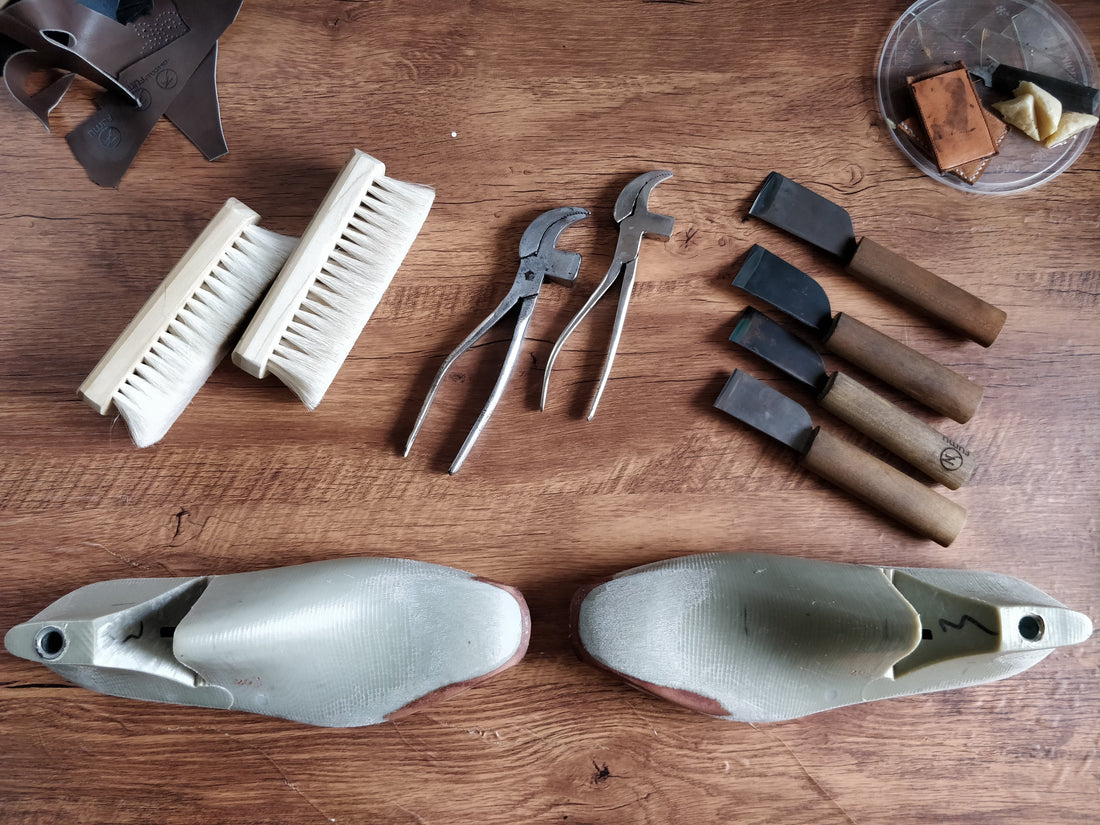
Japanese Shoemaking Tools Part 1: 打ち刃物
Japan is a country famous for its enduring and meticulous craftsmanship. Artisans or "shoukunin" are people who dedicate themselves to the mastery and perfection of their craft.
While bespoke shoemakers are considered shoukunins, we are often reliant on other artisans when it comes to shoemaking tools.
Here's an introduction to my Japanese tools
Part 1: Knives (Tokyo Uchihamono)

I was taught to use only Japanese craft knives for shoe making, from clicking and skiving of uppers, feathering the holdfast to preparing the outsoles and heels. These knives are might look oddly shaped but are surprisingly versatile.

Insole Trimming
The blades are crafted the traditional way, with each piece starting off as a block of carbon steel before being forged and hammered by hand into the right shape and sharpened by hand.
All my blades are made from either Aogami or Shirogami, traditional Japanese high carbon steels, which are highly regarded around the world.The typical construction of these blades involves 2 types of steel, a hard spine with a soft cladding. This method of construction results in a blade that has good balance between sharpness and ease of sharpening.

Knife Cross Section
For the knife enthusiasts, this construction also allows for a Kasumi finish. The Kasumi is the wave which appears on single beveled knives where the softer steel meets the harder steel. The type of whetstone used during sharpening can affect the Kasumi finish. I've been told that using natural stones results in the most beautiful Kasumi. Thankfully, a Kasumi finish is purely aesthetics and I am happy as long as my knives are sharp.

Close up shot, no kasumi finish
The handle material is Japanese Magnolia wood. This is a lightweight wood which is fairly resilient against water damage and is commonly used for tool handles in Japan. Some blade smiths offer different types of wood. Aside from having a different grain pattern for aesthetic reasons, the weight of the wood varies and tilts the balance towards the handle; I can imagine this being enough of a reason for the seasoned craftsmen because these upgrades can cost more than the blade itself.
The number of blade smiths in Japan is on the decline but due to the huge demand from the culinary industry, we should still be able to enjoy their works for some time, unlike lasting pliers, which will be the feature of the next post.
